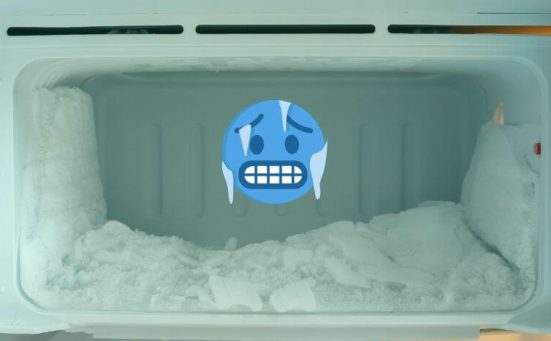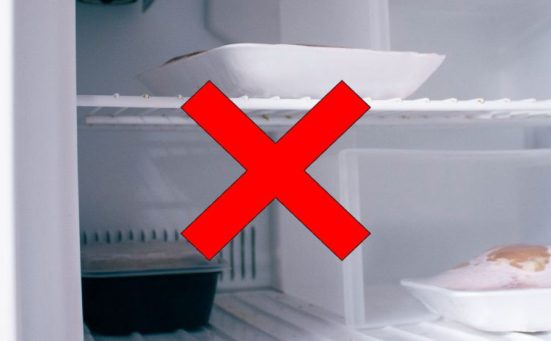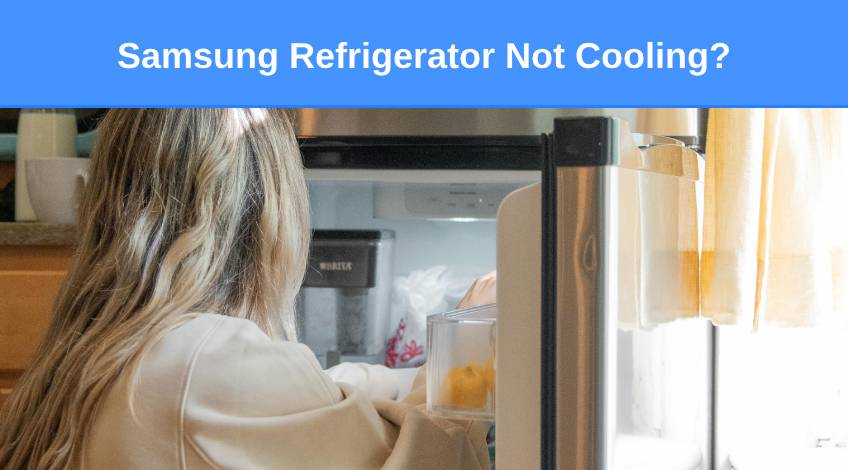
Samsung Refrigerator Not Cooling? (here’s how to fix it)
If you own a Samsung refrigerator and it’s not cooling, it’s not doing what it is designed to do. This can be worrying especially during hot spells.
In this article we take a close look at all of the reasons why your Samsung refrigerator might not be cooling and offer solutions to those problems.
Why Is My Samsung Refrigerator Not Cooling?
There are several reasons why your Samsung refrigerator might not be cooling which include;
| Probable Cause | Solution |
|---|---|
| Power Supply Issues | Check the plug, socket, power cord and fix any issues |
| Refrigerator Door Not Fully Closed | Check doorway for obstructions and clear |
| Door Seal Issues | Check for wear and tear to the door seal and replace if necessary |
| Refrigerator Too Close To A Heat Source | Move the refrigerator away from a heat source |
| Temperature Set Too High | Lower the temperature of the fridge to around 3o C |
| Insufficient Wall Clearance | Move the fridge further from the wall |
| Overcrowded Refrigerator | Reduce food levels and ensure vents are kept clear |
| Demo Mode Activated | Clear demo mode |
| Iced Or Dirty Condenser Coils | Defrost and clean the condenser coils |
| Faulty Condenser Fan | Inspect, clean or replace the condenser fan |
| Faulty Evaporator Fan | Inspect, clean or replace the fan or fan motor |
| Defective Start Relay | Inspect and replace the start relay if necessary |
| Defective Thermostat | Inspect and replace the thermostat if necessary |
| Faulty Start Capacitor | Inspect and replace the start capacitor if needed |
| Faulty Thermistor | Check and replace the thermistor if necessary |
| Defective Compressor | Contact a technician |
| Defective Control Board | Contact a technician |
Let’s look at each of these issues in more detail;
Power Supply Issues
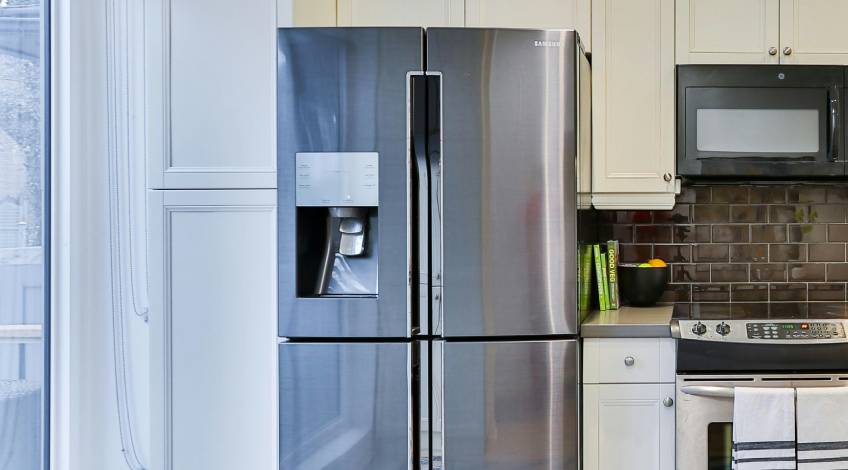
The first thing to check if your Samsung refrigerator isn’t cooling properly is the power supply. Check that the plug is fully inserted into the socket and that the socket is functioning correctly.
You can check the socket by plugging something else into it and making sure that it is working properly. You should also check the fuse in the plug and the circuit breaker for the socket.
Refrigerator Door Not Fully Closed
If the door is not closed properly it will allow cool air to escape which will result in the fridge not cooling sufficiently. Check that there are no items obstructing the doorway preventing the door from closing properly.
Then ensure that the door is fully closed. If you’re satisfied that this is not the cause of the problem, move on to the next step.
Door Seal Issues
Check the actual door seal for any dirt, gunge or other unpleasantness that could be preventing the door from closing properly. In some cases, there could even be ice building up around the door seal which could prevent the door from closing correctly.
Check that the rubber seal isn’t worn or perished at any point as this could also prevent the fridge from cooling sufficiently. If the door seal is damaged, it will need to be replaced.
Refrigerator Too Close To A Heat Source
If your refrigerator is positioned close to a sunny window, cooker, radiator or other source of heat, this could prevent it from cooling properly.
Try moving the refrigerator to a position away from any heat source and see if that does the trick.
Temperature Set Too High

It could be that the temperature of your refrigerator is set too high. The ideal temperature for your Samsung refrigerator is 3°C (37°F) and -18°C (0°F) for the freezer.
Resetting the temperature could be all that’s needed to solve the fridge not cooling correctly.
Insufficient Wall Clearance
If you have placed your Samsung refrigerator too close to the wall, it will not cool sufficiently. This is because the unit requires a decent air flow which is impossible if the appliance is too close to the wall.
Your Samsung refrigerator needs at least 1 inch clearance all round. That’s 1 inch between the back of the appliance and the wall, 1 inch between the sides of the appliance and the walls or cabinets and 1 inch above the unit from the ceiling or cabinetry.
Overcrowded Refrigerator
Just like the outside of the appliance needs air flow, so does the interior. If there is too much food crammed into the fridge or freezer, it could be blocking an air vent.
This will cause the fridge to not cool sufficiently. Rearrange the contents of the fridge and freezer to ensure the air vents are not blocked.
Demo Mode Activated
Your Samsung refrigerator has a demo mode which is used when the appliance is displayed in the showroom. When in demo mode, the fridge will light up and show all of the regular working components except for the compressor which will not run in demo mode.
You should see OF-OF on the display screen if the fridge is in demo mode. Deactivating the demo mode varies from model to model so you will need to consult your handbook for specific instructions.
Some models will require pressing and holding the energy saver and power freeze/freezer buttons for 3 to 5 seconds or until you hear a beep. Whilst others require a different button combination.
Fixes That Might Affect Your Warranty

We have now covered all of the simple fixes, below we start looking at some of the more technical issues that you might experience. If your Samsung refrigerator is still under warranty, we recommend contacting Samsung directly.
You should never start investigating any of the components of your appliance if it is still under warranty. To do so could void any warranty and cause you serious harm if you’re not sure what you’re doing.
Iced Or Dirty Condenser Coils
If the fridge isn’t cooling properly it could be due to the condenser coils not working properly. The most likely cause of the condenser coils not working is if they are dirty or iced up.
To check the condenser coils you will need to;
- Disconnect the power supply
- Move the appliance away from the wall to gain access
- Locate the coils and remove the cover
- If the coils are iced, leave the power off to allow the ice to melt
- If the coils are dirty, wipe with a clean cloth or if they’re excessively dusty, use a vacuum
- Once all of the ice and/or dirt has been removed, reconnect the power supply
Faulty Condenser Fan
The condenser fan helps to keep the coils cool, if it develops a fault or packs up altogether, your fridge won’t cool down properly. To inspect the fan follow steps 1+2 above and then;
- Locate the fan and remove the cover
- Turn the fan one full turn by hand
- If there is anything obstructing the fan, remove it
- If the fan is covered in ice, leave the appliance off for around 1 hour or until the ice thaws
- If, after the ice or blockage has been removed, the fan doesn’t rotate properly, it will need to be replaced
- If the fan does rotate, you will need to check the fan motor with a multimeter for continuity
- If it doesn’t have continuity, it will need to be replaced
Faulty Evaporator Fan
The evaporator fan helps distribute cool air from the freezer into the fridge. If it develops a fault, the fridge might not cool sufficiently. To check the evaporator fan you should;
- Disconnect the power supply to your appliance
- Open the door to the freezer and locate the evaporator fan
- Remove the cover and turn the fan by hand
- If there is anything obstructing the fan, carefully remove it
- If the fan is iced up, leave the appliance unplugged for around 1 hour to allow the ice to melt
- If, after clearing any obstruction (including ice) the fan doesn’t rotate, you will need to check the fan motor using a multimeter
- If the motor doesn’t have continuity it will need to be replaced
Defective Start Relay
The job of the start relay is to help the compressor to start and operate correctly. If the start relay packs up, the compressor won’t start and the fridge will not cool correctly. You can check the start relay by doing the following;
- Disconnect the power supply
- Locate the start relay (consult your user manual for the precise location on your model)
- Disconnect the start relay and check it for continuity using the multimeter
- If it doesn’t have continuity replace it
Defective Thermostat
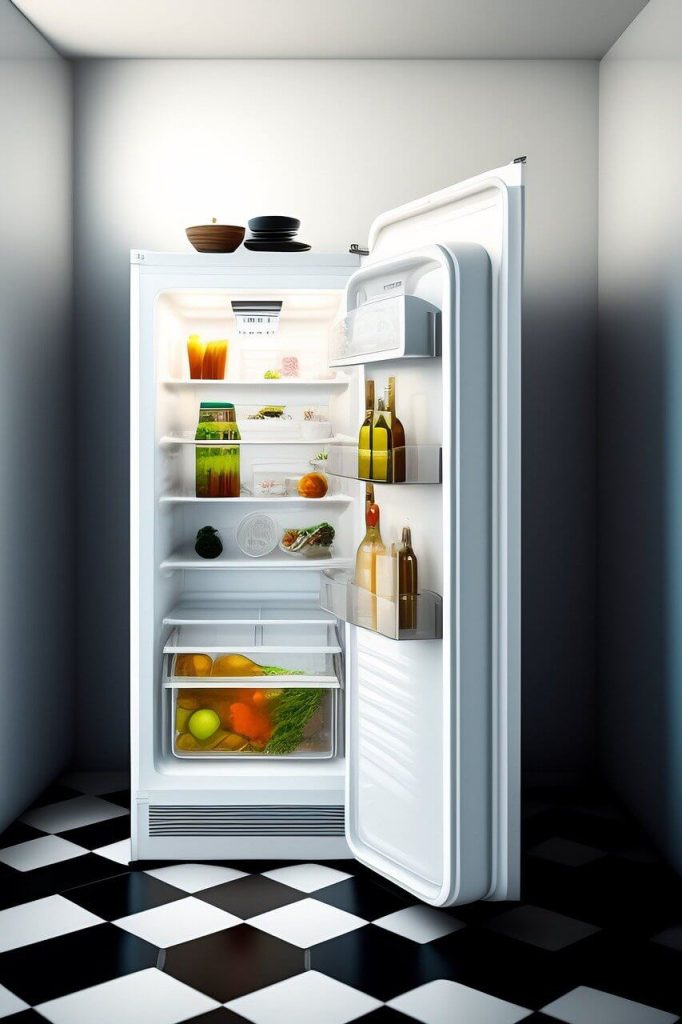
The thermostat on your Samsung refrigerator monitors the temperature inside the fridge to control the functions of the compressor, evaporator fan and condenser fan. If the thermometer becomes defective, it could cause the fridge to not cool properly.
You can check the thermostat by doing the following;
- Disconnect the power supply to your refrigerator
- Locate the thermometer (consult your user manual for the specific location on your appliance)
- Disconnect the thermostat and check it for continuity using the multimeter
- If it has no continuity, it will need to be replaced
Faulty Start Capacitor
The capacitor works in conjunction with the start relay to ensure the compressor functions correctly. If the start capacitor develops a fault, the fridge will fail to cool properly.
You can check the start capacitor by doing the following;
- Disconnect the power to the refrigerator
- Consult your user manual to locate the start capacitor
- Disconnect the start capacitor and check it for continuity using the multimeter
- If it fails the continuity test, it will need to be replaced
Faulty Thermistor
The thermistor monitors the temperature in your fridge and passes messages to the control board to get the compressor to run as needed. If the thermistor develops a fault, the fridge will not cool properly. You will need to do the following to check the thermistor;
- Disconnect the power to your fridge
- Locate the thermistor by consulting the user manual
- Disconnect the thermistor and test it using a multimeter for continuity
- If it fails the continuity test, replace the thermistor
Defective Compressor
As you may have worked out by now, the compressor is the main component in your fridge for producing cool air. It does this by distributing refrigerant around the fridge. If it becomes defective it will need to be replaced.
Checking and replacing the compressor is an expensive and difficult task. Which is why we recommend getting a technician to investigate and replace the compressor if necessary.
The technician will be best placed to advise you on whether it’s financially better to replace the compressor or buy a new fridge.
Defective Control Board
If you have got this far, all that’s left is the control board. If you suspect the control board is defective, we recommend contacting a technician to inspect and replace the control board if necessary.
Control boards are expensive and delicate parts, the technician might decide that it is more cost effective to replace the fridge instead of replacing the control board on your existing model.
SEE ALSO: Loud Samsung Refrigerator Fan Noise? (just do this)
Frequently Asked Questions
If your Samsung refrigerator is not getting cold it could be caused by a number of issues including; issues with the power supply, the door isn’t fully closed, the door seal is damaged, the fridge is located too close to a heat source, the temperature is set too high, it is too close to the wall, there are too many items in the fridge or freezer, demo mode has been activated or one of the components has malfunctioned.
If your Samsung fridge is running but not cooling it means there is a problem. These symptoms are typically caused by the appliance being in demo mode, Improper installation, inadequate ventilation, worn door seal, the door isn’t shut properly, too many items crammed into the unit or there is a component failure.
One of the most commonly reported problems with Samsung refrigerators is fluctuations in temperature. This is often evident in poor cooling, inconsistent cooling or a complete lack of cooling.
Also, follow us on Pinterest ...

